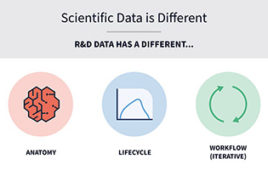 Maya Angelou said: “You may not control all the events that happen to you, but you can decide not to be reduced by them.” Statistical process control (SPC) is a methodology used to improve a process. Before a process can be improved, it needs to be understood. Dr. Shewhart at Bell Laboratories developed the basics in the 1920s. His concept of controlled variation (due to chance causes) vs. uncontrolled variation (due to assignable causes) is at the heart of the strategy. A process needs to be manufactured consistently with the average (or in some cases a median) kept at a target value with its variation within product specifications. Evaluation of the process average and variation is done via a control chart where the consistent operation of a process inside limits is indicative of stability. Shewhart’s selection of control limits at 3 sigma values around an average is a combination of statistics and practicality. Action to bring the process back into stability should only be taken when there is indication of instability. This instability is seen in the process performing outside the limits or beginning to move towards those limits as seen by violations of runs rules. These are statistical tests, the most important of which is a single point outside the control limits. Others are two out of three successive points on the same side as the central line, but more than 2 sigma away and four out of five successive points on the same side as the central line, but more than 1 sigma away. Several of these rules can be grouped, such as the AT&T set.
Maya Angelou said: “You may not control all the events that happen to you, but you can decide not to be reduced by them.” Statistical process control (SPC) is a methodology used to improve a process. Before a process can be improved, it needs to be understood. Dr. Shewhart at Bell Laboratories developed the basics in the 1920s. His concept of controlled variation (due to chance causes) vs. uncontrolled variation (due to assignable causes) is at the heart of the strategy. A process needs to be manufactured consistently with the average (or in some cases a median) kept at a target value with its variation within product specifications. Evaluation of the process average and variation is done via a control chart where the consistent operation of a process inside limits is indicative of stability. Shewhart’s selection of control limits at 3 sigma values around an average is a combination of statistics and practicality. Action to bring the process back into stability should only be taken when there is indication of instability. This instability is seen in the process performing outside the limits or beginning to move towards those limits as seen by violations of runs rules. These are statistical tests, the most important of which is a single point outside the control limits. Others are two out of three successive points on the same side as the central line, but more than 2 sigma away and four out of five successive points on the same side as the central line, but more than 1 sigma away. Several of these rules can be grouped, such as the AT&T set.

 The type of data and subgrouping helps determine the type of chart best suited for a process. For continuous data with a subgrouping of greater than one, the X and R chart pair is suitable. The subgroup is the number of values which can be collected in a limited time which forms a natural grouping. For the X chart, the values are plotted on the y axis against a time based x axis group (e.g. day). For the R chart, the range of data represented by the values is plotted against a similar x axis (Figure 1). Subgroup 15 is outside of control limits.
The type of data and subgrouping helps determine the type of chart best suited for a process. For continuous data with a subgrouping of greater than one, the X and R chart pair is suitable. The subgroup is the number of values which can be collected in a limited time which forms a natural grouping. For the X chart, the values are plotted on the y axis against a time based x axis group (e.g. day). For the R chart, the range of data represented by the values is plotted against a similar x axis (Figure 1). Subgroup 15 is outside of control limits.
For continuous data with a subgrouping of one, the Individuals and mR chart pair is suitable. A single value or mean or median is plotted on the y axis against the x axis. For the mR chart, the difference of successive values from the Individuals chart is plotted against the x axis.
For attribute data, where the data is binomial, meaning that a condition exists or not, then if the subgroup size varies, the proportion can be plotted on a p chart. If the subgroup is constant, then the number of conditions can be plotted on an np chart. If the data is represented by a Poisson distribution where a number of instances of a condition can occur, then if the subgroup size varies, then the number of occurrences can be plotted on a u chart. If the subgroup is constant, then the number of occurrence can be plotted on a c chart.
For situations where it is desirable to detect small changes in the mean, a cumulative sum (CUSUM) chart is applicable. It calculates cumulative sums of subgroup or individual measurements from a target and compares it to a V-mask limits. Each point is calculated from all values preceding and including the current subgroup. The limits are determined from average run length, and an out-of-control situation occurs when one or more points cross the lower or upper arm of the V-mask (Figure 2). Process shows a shift at Day 9.
 Moving Average charts are also used to detect small changes in the mean at the expense of being susceptible to correlation among consecutive moving averages. The uniformly weighted moving average (UWMA) chart is used to plot the average of the n most recent subgroups and the current subgroup means. As subgroups are added, the oldest is removed. A larger n guards against sudden shifts. A similar system is used for the exponentially weighted moving average (EWMA) chart, which uses a weighted average where the weights decrease exponentially as you move earlier in time. Larger weights protect against smaller shifts.
Moving Average charts are also used to detect small changes in the mean at the expense of being susceptible to correlation among consecutive moving averages. The uniformly weighted moving average (UWMA) chart is used to plot the average of the n most recent subgroups and the current subgroup means. As subgroups are added, the oldest is removed. A larger n guards against sudden shifts. A similar system is used for the exponentially weighted moving average (EWMA) chart, which uses a weighted average where the weights decrease exponentially as you move earlier in time. Larger weights protect against smaller shifts.
Tracking a process where data comes from rarely occurring events requires special charts to prevent many points from being flagged as out-of-control. A g-chart counts the number of events between nonconformances or rare errors. A t-chart calculates the time elapsed since the last event.
The previously mentioned charts plot a single characteristic, but sometimes several characteristics need to be plotted on a single chart to understand a process. Multivariate charts do this by normalizing a characteristic so that it can be plotted alongside other characteristics. The transformation is by subtracting the target value and dividing by the standard deviation (Figure 3). Hotelling’s T2 chart is a multivariate extension of the XBar chart with considerations for correlation.

Principal Components: on Covariances
|
Eigenvalue |
Percent |
Cum Percent |
ChiSquare |
DF |
Prob>ChiSq |
|---|---|---|---|---|---|
|
0.2515 |
53.383 |
53.383 |
427.026 |
14.000 |
<.0001* |
|
0.1309 |
27.798 |
81.181 |
310.357 |
9.000 |
<.0001* |
|
0.0754 |
16.005 |
97.186 |
212.451 |
5.000 |
<.0001* |
|
0.0086 |
1.826 |
99.012 |
9.196 |
2.000 |
0.0101* |
|
0.0047 |
0.988 |
100.000 |
0.000 |
0.000 |
. |
|
Eigenvectors |
||||||
|---|---|---|---|---|---|---|
|
Viscosity 1 |
0.72656 |
0.96804 |
-1.61983 |
7.90302 |
-1.43401 |
|
|
Viscosity 2 |
-0.64005 |
1.60442 |
0.61772 |
0.88048 |
10.61676 |
|
|
Viscosity 3 |
1.45846 |
0.53053 |
2.37288 |
-0.61162 |
0.35220 |
|
|
Viscosity 4 |
0.67171 |
1.02159 |
-1.99332 |
-7.21043 |
0.82835 |
|
|
Viscosity 5 |
-0.67902 |
1.67356 |
0.80931 |
-0.82012 |
-9.96599 |
|
Note: Eigenvectors were divided by square root of eigenvalues.
Short production runs pose problems for control charts. The first goal is to stabilize the process and make it perform in a consistent manner. Then, setting the target correctly and maintaining it in control should be the goal. There are tools such as a difference chart where a nominal value, such as a historical grand average, is subtracted from each observed value and this difference is plotted. Mean Ranges charts where each range is the average of a number of subgroups and all subgroups are the same size are another option. Z-charts transform a value by subtracting a nominal value for a product and dividing by a sigma for that product.
SPC is a useful process improvement technique to aid in getting and keeping a process on target with minimal variation. Selection of a few key characteristics to track along with a suitable subgroup and the establishment of a set of limits are vital.
Mark Anawis is a Principal Scientist and ASQ Six Sigma Black Belt at Abbott. He may be reached at [email protected].
R&D 100 AWARD ENTRIES NOW OPEN:
Establish your company as a technology leader! For more than 50 years, the R&D 100 Awards have showcased new products of technological significance. You can join this exclusive community! Learn more.




